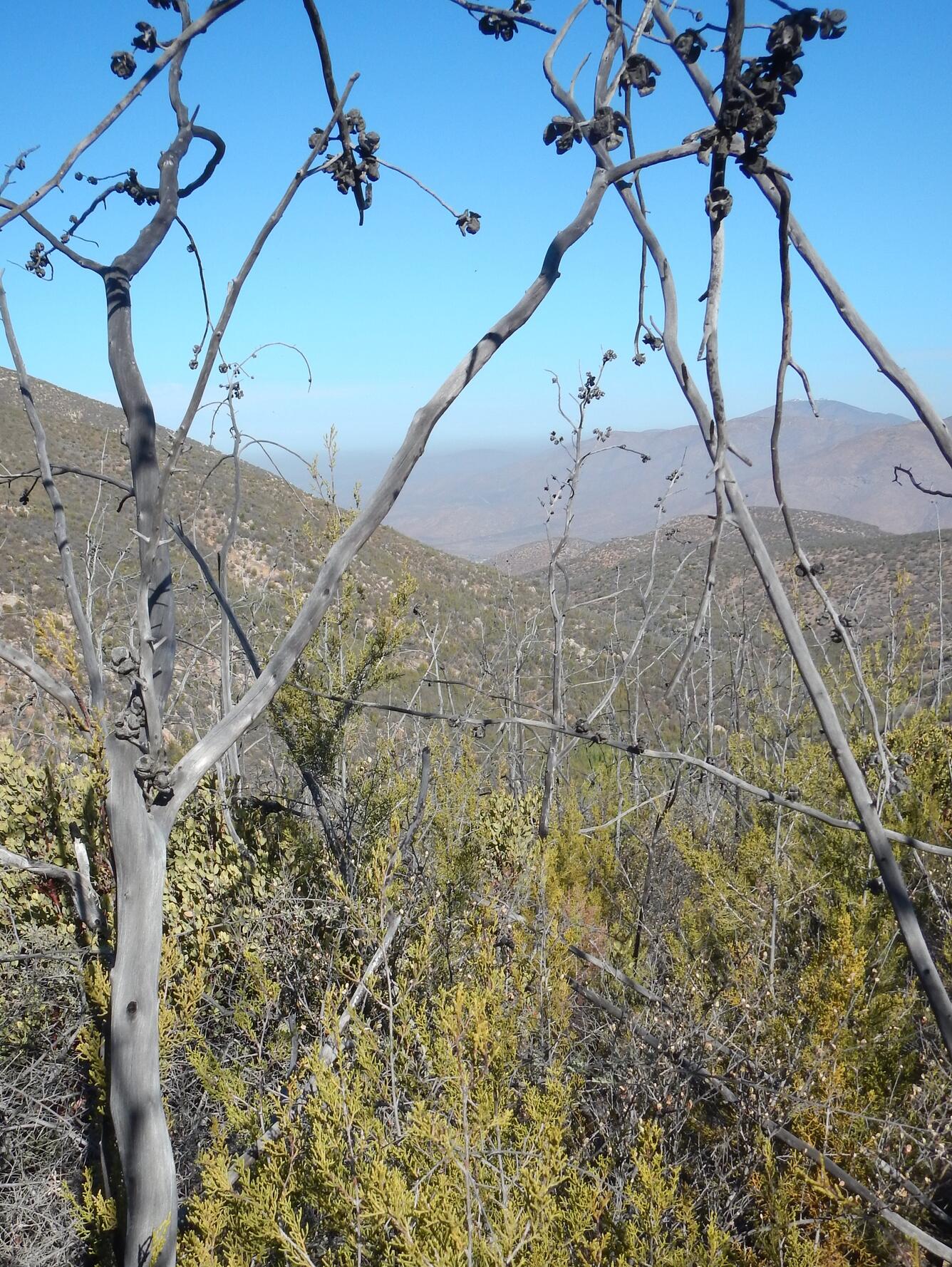12 Days of Conifers: The Goldilocks Cones of Tecate Cypress
For Day 5 of 12 Days Of Conifers we have a very cool and rare tree—the Tecate cypress (Hesperocyparis forbesii)--and some fascinating facts about its fire-stimulated cones.
The Tecate cypress lives only on four mountain peaks in southern California and scattered populations in northern Baja California. Tecate cypress is a closed-cone conifer, which means that the scales of its cones are tightly sealed and the seeds not released until stimulated by an environmental trigger—in this case, fire. This trait is also known as serotiny.
In fire-prone systems, especially those where high-severity fires that kill most aboveground plant material are common, serotiny is a great trait to have. It helps these trees time their reproduction to a post-fire pulse that enables the population to recover even if most of the parent plants die. And the young seedlings can take advantage of the nutrient rich soils and abundant space and light of the post-fire environment.
But there’s a catch. This strategy only works well when the interval between fires is long enough for the young trees to mature and produce enough of their own cones. If another fire comes through before there’s a sufficient seed bank, the population will have a tough time recovering. Scientists call this “immaturity risk.” It can also be a problem if the fire is not hot enough to open the cones, or if it is so hot that that the cones are damaged—Tecate cypress is a bit like Goldilocks.
There’s some uncertainty around the historical fire interval in Tecate cypress habitat, but it’s thought to be around 30-130 years, similar to the surrounding chaparral. Today, many parts of Southern California are experiencing more frequent fire than they once did, due to increased ignitions from a growing human population. Scientists and managers are concerned that changes to fire patterns put the Tecate cypress and other fire-dependent species at risk, but it can be a challenge to figure out how short a fire interval is too short, and what management actions will be most effective. A USGS study of Tecate cypress published in 2019 found that immaturity risk is a problem for the species, but the specifics of how it plays out depend not only on stand age but also on climate and local variability in stand density and size.
Check out that study here to learn more about Tecate cypress and fire-dependent ecosystem dynamics.
Return to the 12 Days of Conifers home



